Let's Get More Spectators - Part 4
Let's Get More Spectators - Part 4
Spectacles, Please
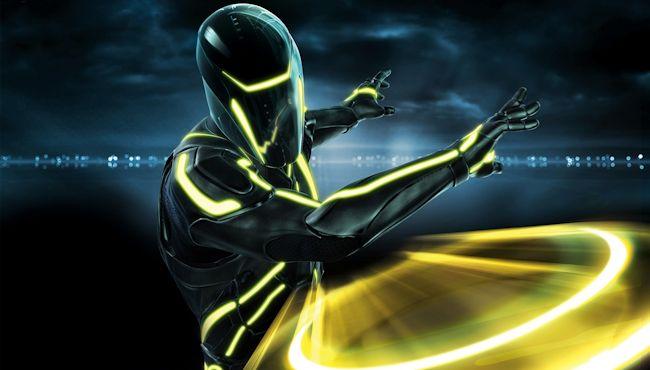
It should be no surprise that "spectacle" and "spectator" are derived from Latin, meaning "to look". Spectators want something interesting to watch and a spectacle can fulfill that need. Disc golf may not seem like a spectacle to many. But fireworks on the Fourth of July, or for that matter any time, would qualify as a spectacle that people love to watch. How about combining the two? (Warning: We're now moving into ideas that stray a little or a lot from our current game.)
Night Play
We already have a growing, not-so-underground movement to play disc golf after dark, mostly recreationally, but many leagues must play some or all of their holes in the dark during rounds at the edges of their spring and fall seasons. Much of this play is done with minimal course lighting if any with LEDs on the discs and sometimes baskets as the main pinpoints of light.

Consider colorfully lighting up the course, baskets and players with LEDs (perhaps solar powered) so it looks like a fireworks show to the spectators and video cameras when the course is loaded with players. Sponsors and sportswear producers would develop fiber optic and LED designs skillfully woven into the clothing, bags and chairs with glowing logos and sleek looks after dark. Perhaps the lights on/in the targets display a distinctive light pattern for 3-4 seconds when a putt is holed out, a bit like a slot machine when it pays out. A line of small LEDs might be positioned along the edges of fairways so they look like landing lights along a runway.
Counter to what you might think, there are advantages for spectators and video that could make disc golf easier to watch at night. Videographers and spectators can take positions on the course where they can't be seen as a distraction to players like they might in daylight. The first disc meeting the new electronic specs, called the Charge, was PDGA Approved earlier this year and the second one, Kyng Roller, was just approved. The technology is getting ever more sophisticated.
Lit disc flights can be tracked well even on more wooded courses including their pinball movements when bouncing through trees. There's much better visual contrast with lit discs against the night sky versus discs against a clear blue sky.

Electronic scoring via smartphone for the top groups would be standard practice to keep players, spectators and online viewers up-to-date. With electronics built into or attached to discs, we would likely be able to get live disc location information via GPS, similar to the dots display pioneered by the USDGC a while back.
And how about background music playing around the course? Purists with a ball golf mentality might cringe. But consider that background music is standard practice for many X-game sports where the length of intense concentration required is longer than making a throw in disc golf. Doesn't seem to be a distraction for their competitors. Loud, upbeat music was a key part of the mix for the success of the Sky of 10,000 events from 30-35 years ago. Music can establish a more festive atmosphere that appeals to spectators.
Players might have distinctive "walkout music" with a 5-second segment their caddy plays as they approach each tee during the round so viewers have an additional way to identify them at night. Once more discs have embedded chips, perhaps the disc continually repeats a bird call (less annoying sound than a beep) while it's in flight as an additional signal for people to know where it's going.
Going Small Skillfully
We know there are many sports where spectators fill arenas. For spectators, it's reasonably comfortable, you can see the action, and amenities like restrooms and refreshments (possibly alcohol) are nearby. At least the hardcore audience spectators must be interested to watch the sporting activity.
It's not uncommon to see a sport modified for smaller venues where it's easier and more comfortable for spectators to view the action, but especially to improve video coverage. For example, 2-player, outdoor beach volleyball played in a smaller court with bleachers became a "made-for-TV" alternative of 6-player, indoor team volleyball in a big gymnasium.
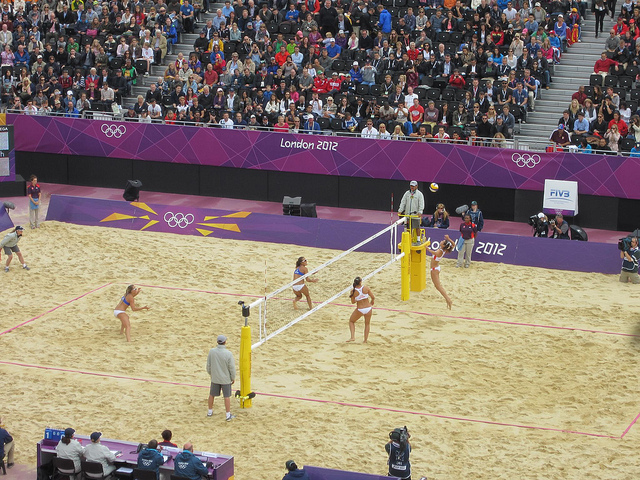
Arenas are good for video coverage with optimal fixed camera positions, plus good cable or wi-fi connections and likely a control room whether fixed or portable. This is especially true in comparison to the more extensive equipment that would be needed to provide fixed video coverage for multiple holes on a course let alone the whole course. This inability or expense to properly cover say half of the holes in disc golf events, especially on wooded courses, is a key drawback to eventually supply quality live content for network presentation, even if it's still a step or two down in quality from ball golf coverage.
Harold Duvall suggests, "To be compelling, we need a fair mix of drama, spectacularity and venue. USDGC hole #17, for example, is not just a green tester. It provides venue as a natural amphitheater and drama based on where it fits in the sequence and the design of the hole. For spectacularity, I believe there needs to be more visual frames of reference." In essence, think of creating each hole as its own arena where you strive to establish a compelling blend of tension, visual appeal, video accessibility, drama and spectacularity where it almost stands on its own independent of the course.
Disc Golf Skill Stations
Imagine a disc golf event in an indoor or outdoor arena with 4 or 5 different disc golf skill stations running simultaneously like they do with gymnastics. However, rather than each player independently doing each skill for a score, they are all playing head-to-head skills matches against other finalists. This could certainly be done as a standalone event. But the goal behind this idea would be to determine the final winners in a regular singles disc golf tournament versus playing a final round. Players with the top X best scores after say three rounds would qualify and establish seeding for this skills finals. Ideally, the number of finalists and skill event matches would be planned to last about 2-3 hours so paying spectators feel they get their money's worth.
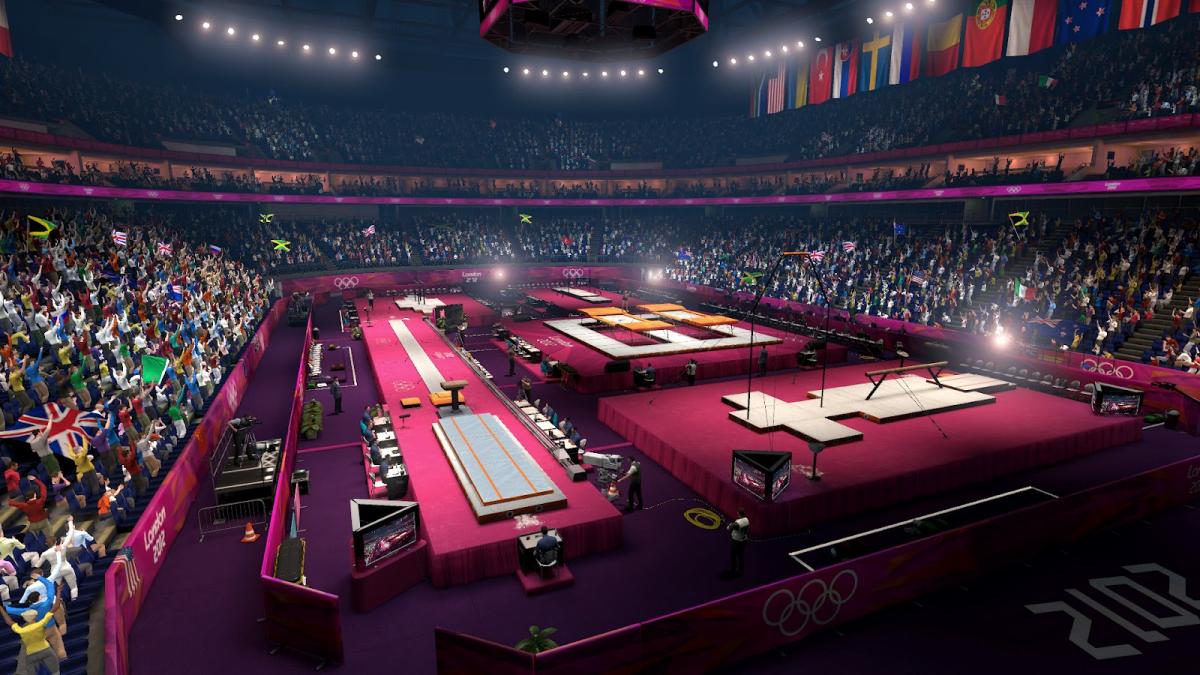
For example, would you watch McBeth versus Wysocki in a speed putting skill where maybe there are 10 stations and 20 throws made within 100 seconds? Or how about watching Lizotte versus Jenkins with a radar gun and a target canvas where both radar speed and accuracy hitting near the center of target circles on the canvas determine their score? Let's watch Pierce and Allen work their magic in a putting obstacle layout with uphill, downhill, forced left, forced right and forced over barrier putts, etc. along with using different stances. The mid-range skill would require Climo versus Brown to make shots over and around obstacles in addition to requiring specific types of throws like forehands, thumbers, rollers and maybe skip shots.
No specific details have yet been developed to flesh out this concept. These skill events would definitely need to be tested in a standalone event format to see how they work, sort of a big boys and girls EDGE challenge. Having large scoreboards would keep the spectators engaged. However, by the time this concept might get tested, it would be more efficient to have live scoring available on a web app that spectators could access from their smart phones.
GoPro was already tapping this idea in June. Disc golf was selected as a new event in this year's GoPro Mountain Games. However, they flipped the order. Competitors had to qualify in three skills challenges to make the top 36 for the disc golf final round. From the GoPro ad:
At the GoPro Mountain Games, competitors will need to survive three qualifying rounds before actually playing a round of disc golf. Qualifiers will consist of various skills competitions in the heart of Vail Village right in the middle of the GoPro Mountain Games. Each pool will compete in the Accuracy and Putting competitions. Starting orders within each pool will be chosen at random. After the first two rounds (broken into pools) all competitors will come together for the MPH/Speed competition. The top 36 players with the best skills in qualifying will step up to play in the final round of golf on our one-of-a-kind disc golf championship course.

While these skill challenges fit in with this rugged, mountain sports event, a future version for elite disc golf events would likely require the skill challenges to be run after the disc golf rounds (rather than screening at the beginning) to build a spectator following. Plus, it would be more efficient to run because only the top players in a few divisions would make the skills final.
Perhaps these individual events could be developed and tested during a skills challenge at Pro Worlds? This approach to skills finals for elite events could significantly increase spectator interest beyond just the disc golfers who played the event and missed the finals, especially if this event was developed as a festival with music and other activities where spectators could try some of the skills and win prizes. It might also be cool if some of it was done at dusk or in the dark so spectators could see what it's like to throw lit discs at lit baskets.
Differentiate Elite Pro Game
Some sports appeal to spectators because they're not able to play the version the elite pros play. Examples would be Formula 1, horse or powerboat racing. Disc golf is a two-edged sword in this regard. On the plus side, the current pro game is accessible to players of all skill levels which likely enhances its popularity for playing it. The drawback is the current pro game is accessible to players of all skill levels. This can reduce much of the wonder since reasonably experienced players can throw birdies on the same holes as the top pros, just not as often.
Note that average PDGA players, male or female, have a rating where we only average about one throw higher per hole on the typical par 54 course than the best players in the world of our age and gender. On the other hand, I could never dunk a basketball even in my prime athletic years. So dunking is an interesting element to watch in comparison to watching top disc golfers who make the same types throws as many can throw, just longer and more accurately.
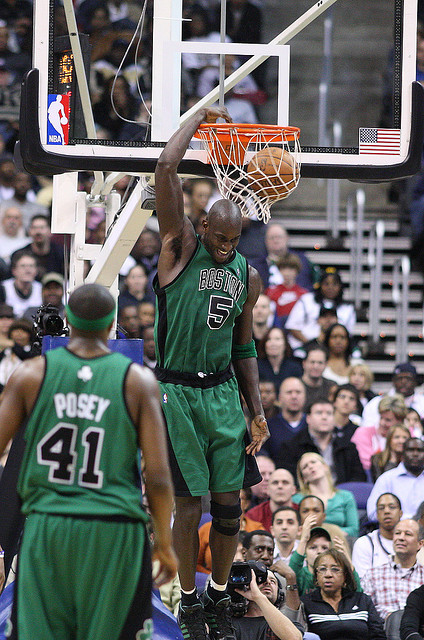
There are several ways our elite game could be differentiated from the daily game and some ideas have already been mentioned in these stories. One emerging idea from some top pros has been to use a different, perhaps smaller basket for elite play. That's a full blown topic unto itself and won't be covered here. The point is some equipment and/or rule tweaks could be pursued by manufacturers or TDs and tested during X-tier events.
The USDGC has become a de facto testing ground for new rule and course design concepts over the years. In some cases, their broader intent was to develop these concepts for the standard game and not just for the elite players at the USDGC. For example, hole 17 introduced: (1) the required rethrow if the green is missed even if disc passes over inbounds area of green, (2) using pine straw bales as the OB boundary, (3) Green/Red flags for spotters to indicate In/Out, (4) the more kidney shaped green (vs. circular) with an offset, fatter landing area, and (5) a short but safe lay-up area in front of the green.
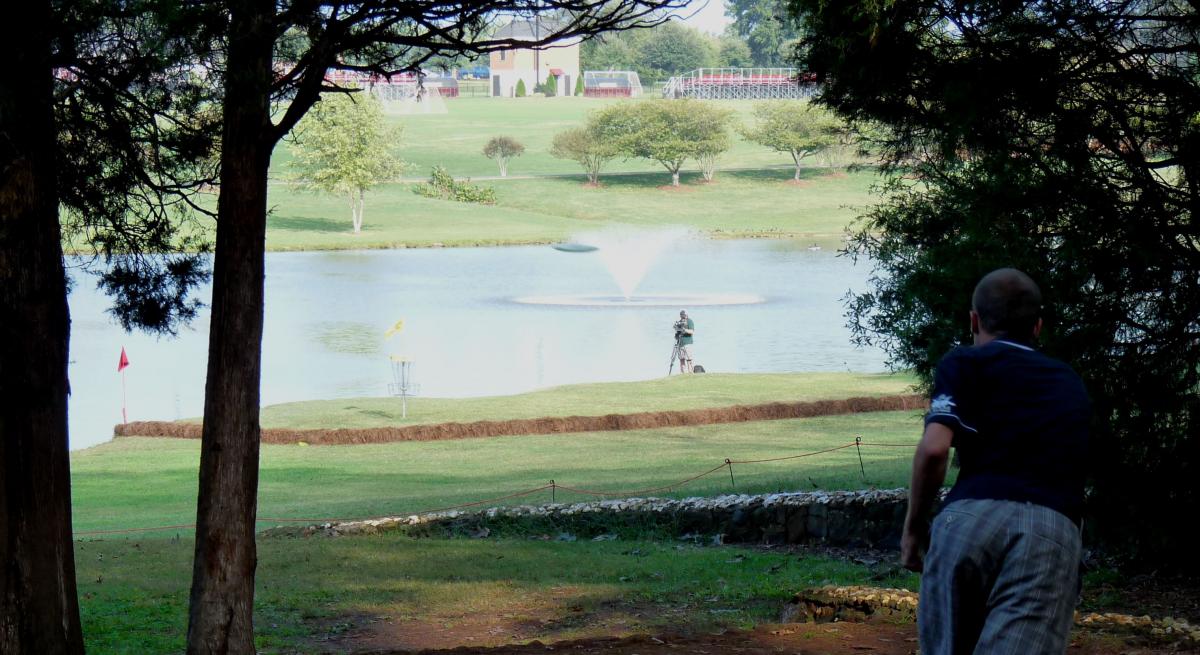
Hopefully, other promoters and visionaries will pick up the banner and try some new ideas and see how they go.
Part 5 looks at Speed of Play, Stats and Drama as ways to increase interest in watching.
- posted 3 days ago
- posted 4 days ago
- posted 6 days ago
- posted 1 week ago
- posted 1 week ago
- 1 of 699
- next ›
- posted 9 years ago
- posted 9 years ago
- posted 9 years ago
- posted 9 years ago

Comments
OK, I try to be as
OK, I try to be as supportive as possible to the sport I love.
I think adding these silly and totally unnecessary gimmicks reeks of desperation.
The sport is amazing.....and is growing at phenomenal rates.
If it ain't broke, don't fix it.
I think the key is gaining larger sponsors, like the Ledgestone tournament, Also, television exposure is huge. The Emerging Sports Network is awesome.
The fact that some player's Aves made in onto ESPN is a sign that people ARE watching.
I think that the International Games that is similar to the World Cup will draw major attention. I also believe that the Inter-COLLEGIATE growth is KEY to making it onto a network like ESPN.
I think that people WOULD pay a nominal fee to attend MAJORS......that is proven at the USDGC every year.
The system isn't perfect....I think winning a World Championship should be a LARGE payout, I'm probably going to step on some toes here, but I think the companies that stand to make the MOST from increased participation should UP THE ANTE.
C'Mpn Innova, Prodigy, Discraft, Dynamic Discs and all the others.......PUT SOME SERIOUS CASH into the pot.
You will never convince me that Innova alone couldn't drop $100,000 into the PDGA Prize..........it's a drop in their huge bucket.
Before we ruin this great sport with stupid gimmicks....;lets pay the players what they deserve.
After playing on and off for
After playing on and off for 14 years and have participated in several tournaments internationally I have been thinking the same "where is the spectators and sponsors" I think our sport need to rethink the dresscode. Why do we have a dresscode? Spectators wants to look at Idols, and especially the young ones want somebody they can relate to. So with a dresscode that make everbody look like a ball golf player/grandpa, no big sponsors will put money in the sport and people will go to other "underground" sports like skateboarding and snowboarding. And I think that is the sports we should look at and try to copy their marketing strategy. Let´s get rid of the dresscode and see heroes like Simon Lizotte play in the clothe he likes to wear and not what he have to wear.
I think most problems will be
I think most problems will be addressed simply by the growth of the game. If the sport continues to double in size every 4-5 years, then in 15-20 years we will be looking at a participation sport with 100 million players. Sponsors, TV etc. will follow by sheer force of gravity, as the example of Finland shows.
I think TV and video coverage are quite a bit more important than live spectators.
A radical re-design (or rigorous selection) of courses is needed, especially in the US, if the sport is to become attractive to spectators. Blasting through the backwoods may be fun for players, but for all practical purposes it makes discs invisible to spectators and cameras. Open mixed parkland (e.g. as in European Open), or converted regular golf courses (Australian Open) are way better, and lead to great viewing. This in itself is radically different from the current US tour (but not necessarily to the tours in other countries).
I agree that night games (or day/night games) would likely increase viewer numbers. And I agree that courses which sharply differentiate the skills of the top players (compared to the journeyman pro) are probably what people want to watch.
I remain unclear, cgkdisc, about what motivates your drive to get more money from spectators. As a recreational player, I want to see the game grow, but whether pros are paid more or less is not a matter of great import to me. I think the sheer growth of the game will drag in major sponsors from outside the sport, as has happened in other sports. That will be the point at which the game takes off commercially.
I am unsure about trying to "milk" current live spectators for money, in what is a very low cost sport (for the participant), that takes place in free-to-access public parks. To get paying spectators, I think you would need to create a rather different product to what we have now.
Hope that helps and all the best.
Paul, the importance of
Paul, the importance of increased purses is two fold.
1) It helps the current Elite group of professionals remain on tour for a longer period of time. This will help with establishing fan bases, and increased spectatorship both live (which IS HUGELY important) and on TV.
2) It will also encourage the younger players to aspire to be a touring professional.
Big time sponsorship is needed, period. I still think the manufacturers need to PONY UP........plus off shoot manufacturers who gain the most, such as Keen, Vibram.......but mostly we need a major MAJOR name. like Coca Cola, or the like.
Pay to spectate events have been proven to succeed, again I point out the USDGC, An AWESOME event that I personally GLADLY pay for both as a PARTNER in my $50 annual fee.....as well as purchasing MANY USDGC discs and souvies while in Rock Hill.
Paying the players who drive the sport is important..........but the pay SHOULD come MOSTLY from those who benefit the most.
As stated in my earlier post.
I will never have a problem paying to watch the USDGC, or other MAJORS..............almost always an EPIC sporting event.
Thanks, acethrower, I accept
Thanks, acethrower, I accept your points, which are well made.
I don't in any way wish to knock what works in the US, but I would welcome a look at what has made the sport work well outside of the US, the prime example being Finland, with 450 courses for a population of 5.5 million, and the European Open being shown on live free-to-air national TV. Perhaps we can aspire to the best of both worlds?
While paying spectators will bring in some money to help fund tourneys at the current (low) level, I'm not convinced that they will of themselves bring a quantum increase in professional pay. That must come from commercial sponsors outside the sport, IMO.
All the best.
The elite USA and Eurpoean
The elite USA and Eurpoean tours can be extended in time by taking advantage of the southern hemisphere summer to play regular events in the southern hemisphere (e.g. New Zealand, Australia) during the northern hemisphere winter. This also has the advantage of developing the sport in those countries.
In a similar way, the
In a similar way, the European (traditional) golf tour now includes Dubai and I think South Africa.